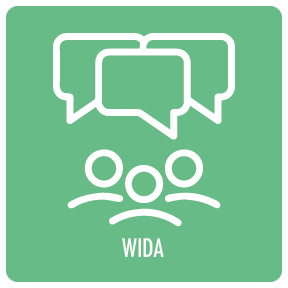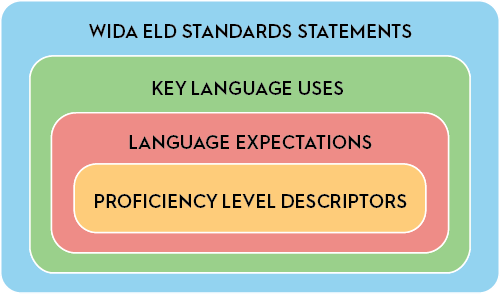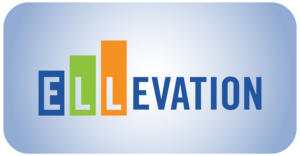
WIDA
WIDA consists of 3 components: WIDA Standards, WIDA Screener, and the WIDA ACCESS test.
WIDA Standards
Standard 1: Language for Social and Instructional Purposes
English language learners communicate for social and instructional purposes within the school setting.
Standard 2: Language for Language Arts
English language learners communicate information, ideas and concepts necessary for academic success in the content area of language arts.
Standard 3: Language for Mathematics
English language learners communicate information, ideas and concepts necessary for academic success in the content area of mathematics.
Standard 4: Language for Science
English language learners communicate information, ideas and concepts necessary for academic success in the content area of science.
Standard 5: Language for Social Studies
English language learners communicate information, ideas and concepts necessary for academic success in the content area of social studies.
Framework Components
The four components work together to make a comprehensive picture of language development.

Big Ideas
Four Big Ideas anchor the standards and are interwoven throughout the framework:
Equity of opportunity and access
- This is essential for multilingual learners’ preparation for college, career and civic lives.
Integration of content and language
- Academic content is the context for language learning, and language is the means for learning academic content.
Collaboration among stakeholders
- Stakeholders share responsibility for educating multilingual learners.
Functional approach to language development
- This approach helps educators focus on the purposeful use of language.
These Big Ideas support the design of standards-based educational experiences that are student-centered, culturally and linguistically sustaining, and responsive to multilingual learners’ strengths and needs.
WIDA Screener
Screening Process
At registration, parents must complete Utah’s standard form of the Home Language Survey (HLS) to identify a student with a native language other than English, or who comes from an environment where a non-English language either is dominant or may have affected a student’s English-language proficiency.
If a language other than English is identified, the initial English Language Proficiency (ELP) screener is administered to confirm EL Status.
- Students who score a composite ELP level 1-4.9 on the WIDA Screener 1-12 or WIDA Screener for Kindergarten are eligible for English Language Development services.
- Those who receive a composite score of 5.0 or higher on the WIDA Screener do not qualify for EL services.

WIDA ACCESS Test
Is administered to kindergarten through grade 12 students who have been identified as English learners (ELs)
Is given annually to monitor students’ progress in acquiring English language proficiency in academic contexts
Meets U.S. federal requirements of the Every Student Succeeds Act (ESSA) for monitoring and reporting ELs’ progress toward English language proficiency
Is anchored in the WIDA English Language Development Standards Framework
Assesses the four language domains of Listening, Speaking, Reading and Writing
Proficiency level scores are interpretive scores. The scores describes student performance in terms of the six WIDA English language proficiency levels
Entering (1) > Emerging (2) > Developing (3) > Expanding (4) > Bridging (5) > Reaching (6)
